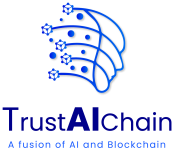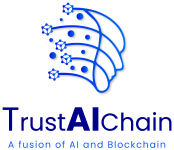The Current Challenges in Immigration Processes are plagued with inefficiencies, lengthy processing times, and potential fraud often plague immigration processes. Key challenges include:
- Document Verification: Authenticating various documents submitted by applicants is time-consuming.
- Background Checks:Conducting thorough background checks involves analyzing vast amounts of data from multiple sources.
- Fraud Detection: Identifying fraudulent applications and documents is crucial to maintaining the integrity of the process.
- Data Security: Ensuring the security and privacy of sensitive personal information is paramount.

How Blockchain Can Transform Immigration
Blockchain technology offers several features that can address these challenges:
- Immutable Records: Blockchain provides a tamper-proof ledger for storing documents, ensuring their authenticity and integrity.
- Transparency: The decentralized nature of blockchain ensures that all parties have access to the same information, reducing the risk of fraud.
- Secure Data Sharing: Blockchain enables secure and efficient data sharing between various agencies involved in the immigration process.Example: Implementing Blockchain for Document Verification
Python
from hashlib import sha256
# Function to hash a document
def hash_document(document: str) -> str:
return sha256(document.encode()).hexdigest()
# Example document
marriage_certificate = “Marriage Certificate of John Doe and Jane Smith”
# Hash the document
document_hash = hash_document(marriage_certificate)
# Store the document hash on blockchain (simplified example)
blockchain = []
blockchain.append(document_hash)
print(“Document stored on blockchain with hash:”, document_hash)

The Role of AI in Immigration
AI can significantly enhance the efficiency and accuracy of various aspects of the immigration process:
- Automated Document Verification: AI can automatically verify the authenticity of submitted documents.
- Background Checks: AI algorithms can quickly analyze large datasets to perform comprehensive background checks.
- Fraud Detection:Machine learning models can identify patterns indicative of fraudulent activity.
- Natural Language Processing (NLP): NLP can analyze communication between applicants and officials, ensuring compliance and detecting potential issues.
Example:Using AI for Document Verification and Authenticity Using Pre-trained Machine Learning Models:
Python
import cv2
import numpy as np
from tensorflow.keras.models import load_model
# Load pre-trained document verification model
model = load_model(‘document_verification_model.h5’)
# Function to verify document
def verify_document(image_path: str) -> bool:
# Load and preprocess the image
image = cv2.imread(image_path)
image = cv2.resize(image, (224, 224))
image = np.expand_dims(image, axis=0) / 255.0
# Predict using the model
prediction = model.predict(image)
return prediction[0][0] > 0.5 # Assuming binary classification (1: Authentic, 0: Fake)
# Example document image path
document_image_path = ‘path/to/marriage_certificate.jpg’
# Verify the document
is_authentic = verify_document(document_image_path)
print(“Document is authentic:”, is_authentic)
Combining Blockchain and AI for a Robust Immigration System
 By integrating blockchain and AI, we can create a robust system that leverages the strengths of both technologies:
By integrating blockchain and AI, we can create a robust system that leverages the strengths of both technologies:- Secure and Transparent Records:Blockchain ensures that all records are secure and transparent.
- Efficient Processing: AI automates and speeds up document verification and background checks.
- Enhanced Fraud Detection: The combination of AI’s pattern recognition and blockchain’s transparency reduces the risk of fraud.
In Summary
Integrating AI and blockchain in the immigration process represents a significant step towards modernization and efficiency. By leveraging these technologies, we can address current challenges, ensure the integrity of the process, and provide a better experience for applicants and officials alike. As we move forward, it’s essential to continue exploring and implementing innovative solutions that enhance the effectiveness of immigration systems.








2 Responses
The post is very informative, but I’d like more information on how blockchain can transform Immigration.
Hi Roger,
Thanks for taking the time to read.
Blockchain can transform immigration by enhancing data security, improving identity verification, streamlining application processes, reducing fraud, facilitating secure information sharing, and ensuring transparency and efficiency in immigration systems. Kindly keep an eye for more posts how blockchain can transform the immigration system.